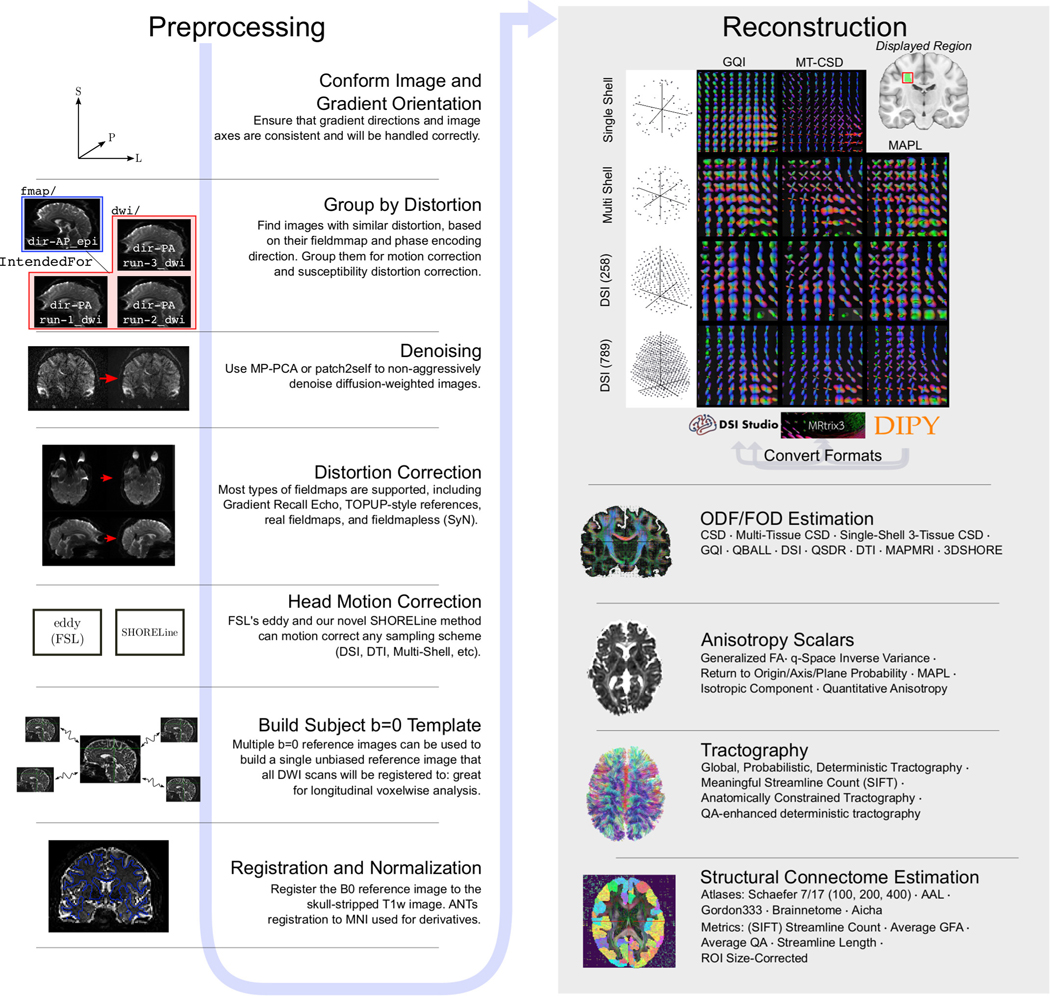Fig 1 |. QSIPrep workflows.
QSIPrep includes preprocessing (left column) and reconstruction (right column) workflows. BIDS data enters the workflow at the top left, following the blue arrow sequentially through the possible steps. The outputs from the preprocessing pipeline are inputs for the reconstruction workflows, which includes reconstruction methods from MRtrix3, DSI Studio, and DIPY. A matrix of orientation distribution functions (ODF)s shows a fiber crossing reconstructed from multiple sampling schemes with multiple methods in QSIPrep. Gray arrows labeled “Convert Formats” indicate that a reconstruction from one software package can be converted to be used in the destination software for further processing (e.g., DIPY reconstructions can be used for tractography in MRtrix3). For further details on options for denoising workflows, see Supplementary Figure 1.

